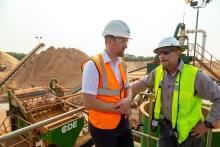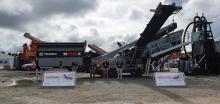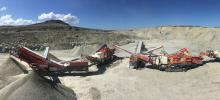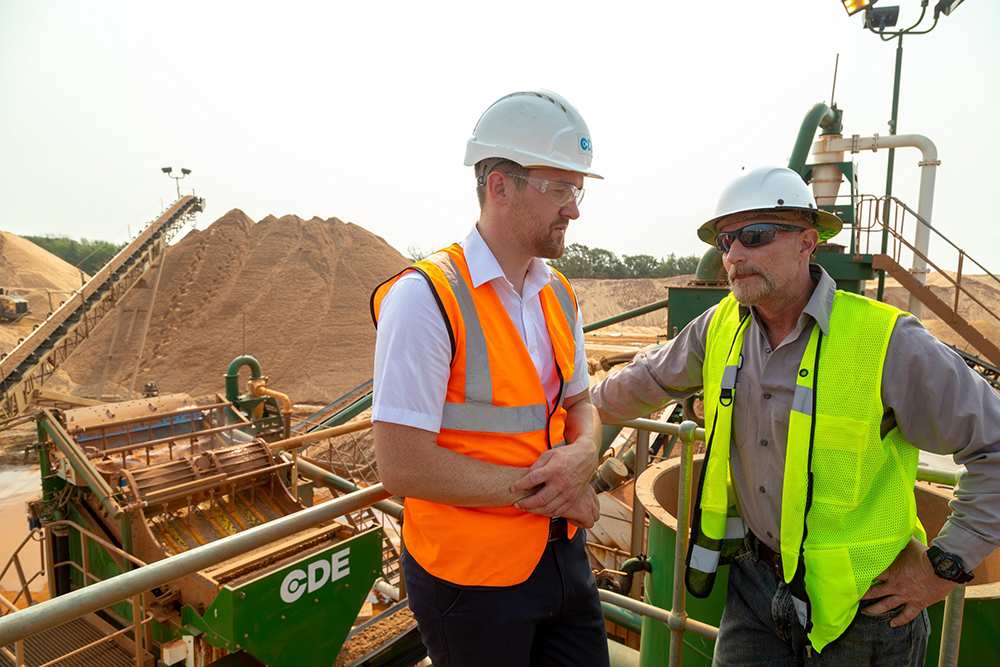
Resolve Aggregates discovered CDE technology and the benefits it could have for the company at ConExpo in 2014. Since partnering with CDE in 2015, the U.S. company has met production objectives at one site, relocated to grow and maximise opportunities, and now is expanding its CDE wet processing plant to explore additional new markets.
The sand and gravel company has been processing fine and coarse aggregates since the mid-1980s, supplying sand and aggregates to the Texas construction industry.

The company experienced first-hand the benefits of CDE’s modular approach when it acquired the current site at Ravenna, Texas. The full sand washing plant was disassembled and containerised at Fort Worth, then relocated and installed by Resolve Aggregates employees in just 11 working days in May of 2017. It was recommissioned by CDE shortly after. The move, combined with CDE’s tailored wet processing solution, enabled Resolve Aggregates to expand its current wet processing system.
The partnership between Resolve Aggregates and CDE has been successful, with sales growth from 73,000 tons/month in its first twelve months of operations in Ravenna to an average of 129,000 tons/month thus far for 2021. Resolve Aggregates is therefore building upon its existing sand and gravel washing plant and the relationship with CDE by upgrading its plant for integration of a fine screen to diversify into golf sands to extend its product offering further.
CDE’s modular approach means its equipment can fit seamlessly into the existing process to minimise plant downtime while upgrades are commissioned.
The upgrade includes an Infinity F1-64 fine screen, integrated into the plant and providing an additional cut point within the existing fine sand product, allowing the production of a specialist, high-value golf sand.
The new screen will process 50tph of sand and gravel and produce certifed in-spec #30 cut - #140 golf sands. Through CDE’s guaranteed equipment performance, the final materials will meet the high-standard requirements of the golf industry and enable Resolve Aggregates to supply valuable products for new markets.
Commenting on the upgrade, Resolve’s spokesperson said: “Our relationship with CDE has been one of collaboration and trust, working with them to ensure the best for our company as we explore both new pastures and new markets. It is remarkable how a simple upgrade has built so easily into our existing plant while opening new possibilities for our company.”
James McShane, CDE business development, North America, said: “This upgrade is a prime example of and a great testament to the flexibility of CDE solutions. The extensive benefits of one straightforward addition highlight the ease of plant expansion with our modular approach and how it contributes to the future growth and success of a company that continues to develop and enhance its processes.
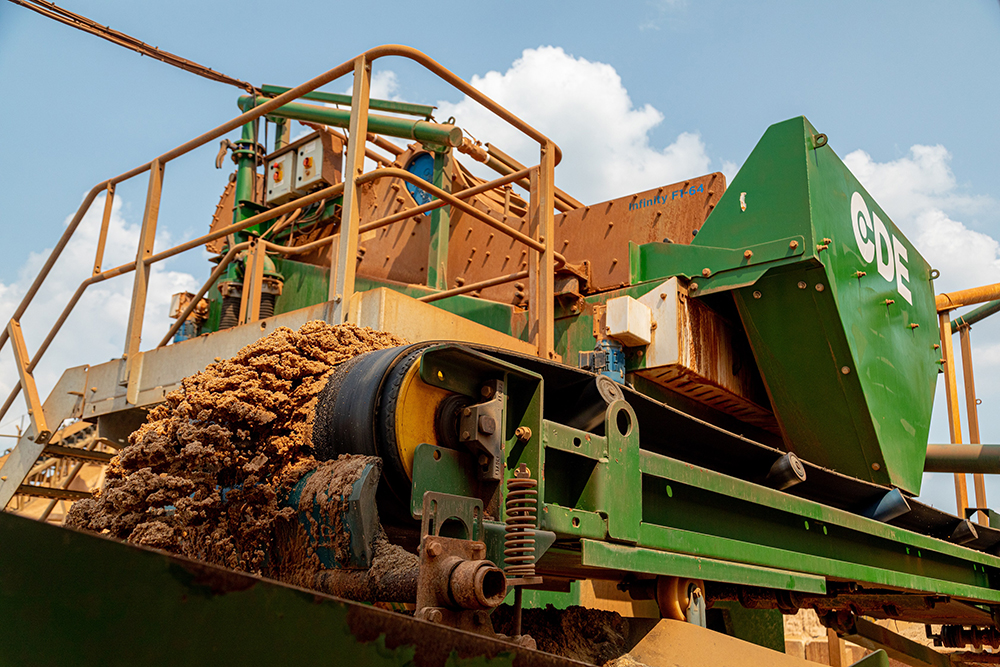
“We have been working with Resolve Aggregates for six years and have seen such marked differences in the company: from relocation to venturing into new avenues that help maximise return on investment. With full accountability for the service and direct support from our team, we look forward to continuing the journey as Resolve Aggregates grow further.”
Lars Bräunling, director of product technology at MAJOR, an innovative global manufacturer of wire screens for the aggregate, mining and recycling industries, has given his expert advice on how to diagnose and address screen media issues in aggregates and mining production.
“All operations have the same ultimate goal for their processing equipment: to improve the cost per ton. This is often accomplished by fixing or preventing equipment issues and optimising performance. The screening process, in particular, is one of the most significant parts a producer should pay attention to,” he explains.
Bräunling says understanding what screening problems to look for and how to fix them can mean a positive ripple effect throughout the material separation process. He believes a proactive maintenance plan and the addition of high-performance screen media make remedying issues and improving efficiency even easier.
“Operations continuously look to improve their bottom line by decreasing the cost per ton. Plant managers must address how much can be produced with a given set of screens and reduce cost factors tied to poor performance, such as machine downtime or screen media change-outs.”
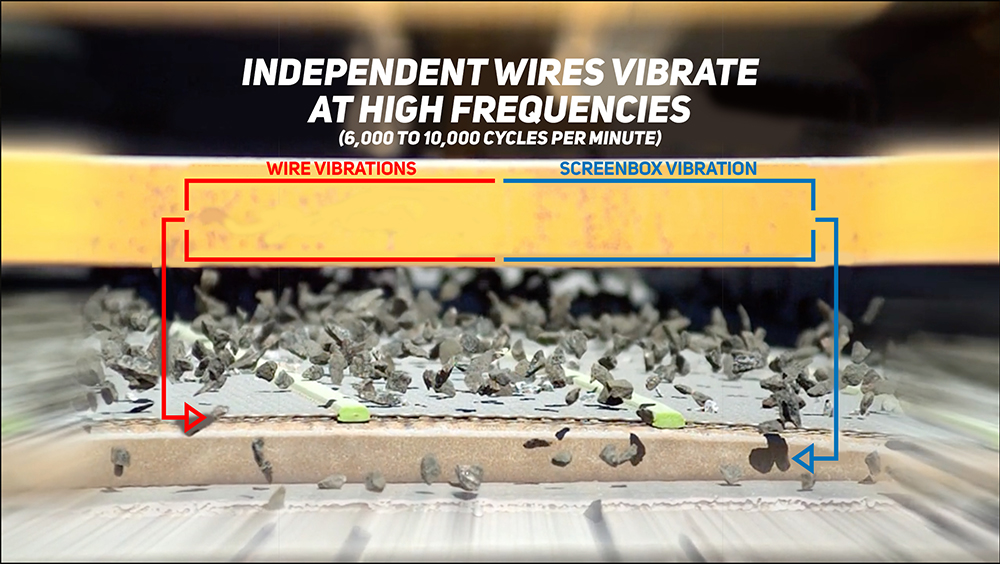
Bräunling advises producers to initially work with an expert to conduct a screening performance assessment to see the complete picture of the operation. This should include an evaluation of the process and any direct screen media issues, the screen setup, the machine condition and how it affects performance. “Use a vibration analysis tool to look for abnormalities that need to be addressed and can’t be easily seen with the human eye. Also, listen to the deck while it is running to reveal loose media, clamp bars or broken wires. Listen for abnormalities or metallic sounds,” he continues.
Bräunling says producers should then examine the crusher feed belt coming off of the screen box to identify issues that could lead to a bottleneck. Improving screening efficiency directly in front of this point affects the entire operation in both directions.
He adds: “A visual check or a belt cut of the crusher feed belt is often enough to see if there is saleable rock that is being sent to the crusher as carryover because the deck capacity is exceeded. This is caused by blinding, pegging, poor open area, non-ideal vibration setup or the wrong screen media setup.”
Lastly, Bräunling recommends looking at used screen media’s scrap pile — also known as the boneyard. “Inspecting the underside of the spent screens is an effective way to diagnose installation challenges. Look for black markings on the underside of the screen media that show the panels have moved and rubbed against machine supports, meaning they weren’t fixed in place like they should have been. This primarily causes wear but can also lead to blinding, pegging and inefficiency. Signs of blinding, pegging or breakage in the used screen media pile are also a good way to quickly identify which machines and decks need attention.
“’Better screening is free crushing’ is a statement sometimes heard in the industry. There are many ways to interpret the saying, but it boils down to how an efficient screen box lessens the load on a crusher by sizing material correctly.”

Bräunling notes that many screening issues can be addressed with a change in screen media. “From traditional woven wire to polyurethane to high-performance screen media, there is no shortage of different styles of screens. The choices can seem daunting; frequently, one type works for specific situations or works best through a combination of different types. An exception is some styles that use advanced engineering to address screening issues with just variations of a single media type.
“High-vibration screen media is one such option. This advanced screen media is made up of independent wires bonded with polyurethane strips. The wires vibrate independently to add to a screen box’s existing vibration, speeding up material separation and passing.”
Bräunling states that screen media options that incorporate this design permit an increased screening action which helps to spread material over the entire screen’s surface area on all decks but, most importantly, accelerates the stratification process. He points out that this effect causes rocks of different sizes to separate, with fine material sinking down towards the screen surface and bigger rocks rising to the top of the material bed. Faster stratification increases the capacity of the deck and allows for a cleaner cut.
“The movement of wires helps to virtually eliminate near-size pegging on the top decks and fine material blinding and clogging on the bottom decks, resulting in higher-quality end product.
“In addition to considering a change of screen media, ensure tensioned screens are installed properly, and that surrounding equipment is operating correctly. Once the process is running productively and smoothly, operations should do what they can to maintain that performance. Develop a preventative maintenance plan that includes vibration analysis tests at regular intervals to identify changes that may point to problems.”
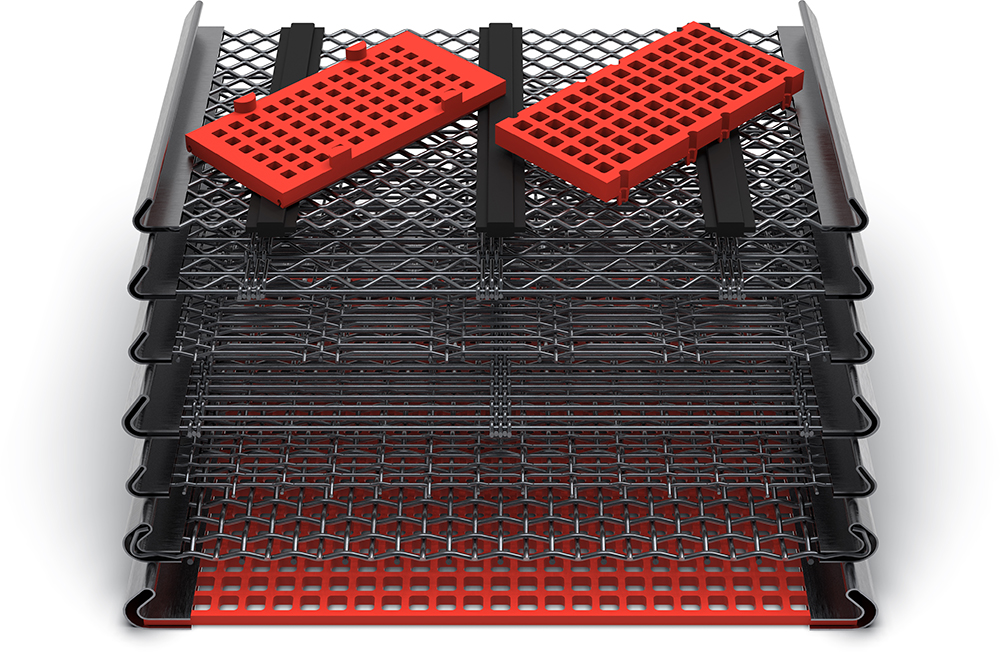
Bräunling notes that it is important for aggregates processing and mining site operators to remember that screen media will wear out over time. Still, it should need replacing because it is “broken, pegged or blinded”. He advises operators to work with a dealer or screen media manufacturer to determine the best screen media options for your application and create a proactive maintenance plan to maintain optimum results.
Durex Products (Durex) showcased its screen media, liners, wear parts, and screen accessories to more than 9,000 attendees at AGG1 in Nashville, Tennessee, 29-31 March 2022. Based in Luck, Wisconsin, the company offers numerous innovative urethane, rubber, and speciality wire screen media options, which allow customers to fine-tune production and increase tons per hour while keeping products in spec and lowering operating costs.
Durex has offered premium screen media technologies since 1965, including its well-known Livewire, Armor, Accuslot, and Vibraspan products. Wear liners and parts for aggregate equipment and screen accessories round out the company’s offerings.

